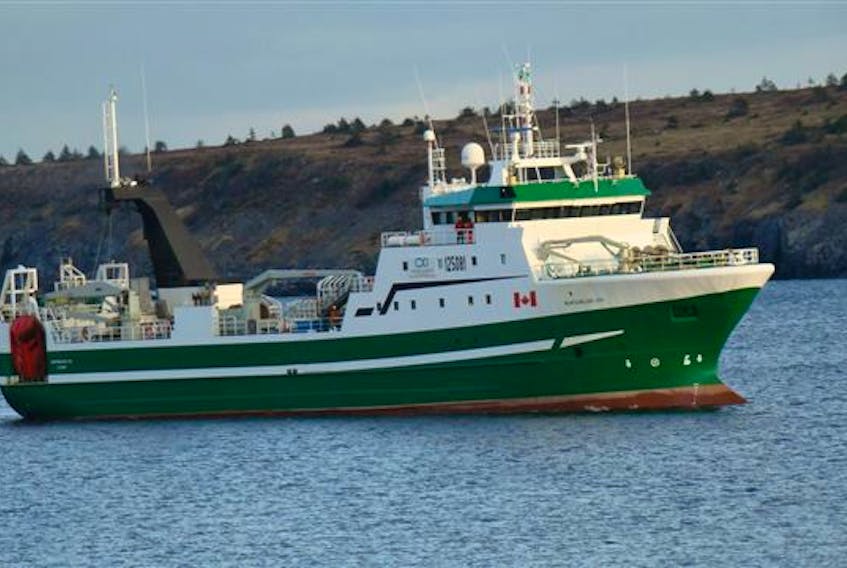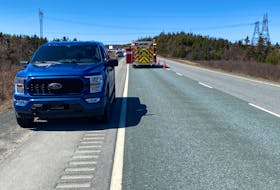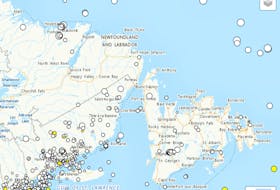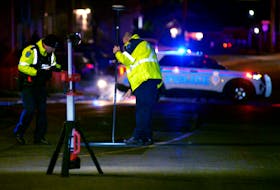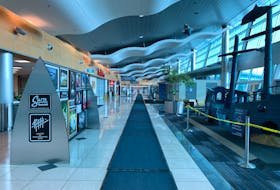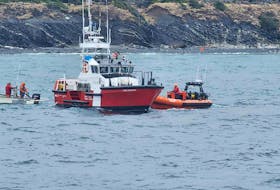A fire on board Ocean Choice International’s factory-freezer trawler Newfoundland Lynx in January started in the vessel’s sauna and, while the fire was contained, it was met with an unco-ordinated response by the crew due to a lack of fire drills that involved “realistic scenarios,” states a Transportation Safety Board (TSB) report released this week.
The report also notes that some of the firefighting equipment on board was in a deteriorated condition and that there wasn’t enough of some key parts of the firefighting equipment.
The TSB notes its function is not to assign fault, but that the report is meant to advance safety.
It advised in the report that, “It is important that crews perform fire drills on a regular basis to confirm that firefighting equipment is in working order, and to reinforce their knowledge of how to use the equipment and of assigned emergency duties. It is also important that these drills include varied and realistic scenarios so that crews are prepared to respond effectively to emergencies.”

The cause of the fire was determined to be, “Burned pieces of a wooden footrest were found below the sauna’s electric heater, indicating that the footrest may have been on the heater when the heater was turned on. With the heater left unattended, the heat likely eventually ignited the footrest, starting the fire.”
As a result of the fire, the company removed the sauna from the vessel, and the space was converted to a storage area and equipped with a smoke and heat detector. Ocean Choice International also ordered additional firefighting equipment to be placed on board.
The Newfoundland Lynx, with 29 crew members on board, was 90 nautical miles northeast of St. Anthony when the fire occurred on Jan. 29 of this year.
That afternoon the bosun, who was in his cabin adjacent to the vessel’s tanning room and sauna, awoke to the smell of smoke. He investigated and saw flames through the window of the closed sauna door. The bosun went to the mess room and alerted other crew members about the fire. One crew member immediately grabbed a fire extinguisher and went with the bosun to the sauna, while another crew member went to inform the bridge.
The bosun opened the sauna door and the other crew member emptied the fire extinguisher onto the flames. The bosun then closed the sauna door and left with the crew member to go to the muster station, located above the trawl deck.
When the chief mate on the bridge was alerted about the fire, the fire alarm was activated and an announcement was made over the vessel’s PA system. The chief mate instructed the crew member to do a head count at the muster station. The master, who was in his cabin, went to the bridge and took control of the vessel. Approximately 10 minutes after the fire alarm sounded, everyone on board was accounted for.

The report’s summary of the event shows that the amount of firefighting equipment — along with some deterioration of the available equipment — was insufficient to handle the type of fire properly, and that fire drills the crew underwent didn’t cover such a possible occurrence. The report notes some confusion and frustration with the lack of working firefighting equipment, though the crew bravely battled the fire and contained the blaze.
The vessel made port in St. Anthony, escorted by other fishing vessels that responded to the mayday call along with Canadian Coast Guard vessels, as well as a Hercules aircraft and Cormorant helicopter dispatched by the Joint Rescue Co-ordination Centre (JRCC) Halifax.
The reported stated, “The crew of the Newfoundland Lynx conducted boat and fire drills while the vessel was docked before every fishing trip, which could last up to six weeks. Although vessel records indicate that the crew inspected the vessel’s firefighting equipment on a regular basis, during the occurrence some equipment was found to have deteriorated and did not function as intended. A fire muster list was posted on each deck of the vessel as required, however, in this occurrence, not all of the roles identified on the muster list were filled as described on the list.
"Despite regulatory requirements, the fire drills conducted on board the vessel were repetitive, and did not include realistic emergency scenarios. Crew would start the main and emergency fire pumps, inspect and pressurize the fire hoses, and then simulate a fire on deck by spraying the trawl doors with water. The crew did not perform post-drill evaluations. Without regular fire drills that included varied and realistic emergency scenarios, not all crew members were completely familiar with the duties they were required to perform in an actual emergency, resulting in an unco-ordinated firefighting response.”

